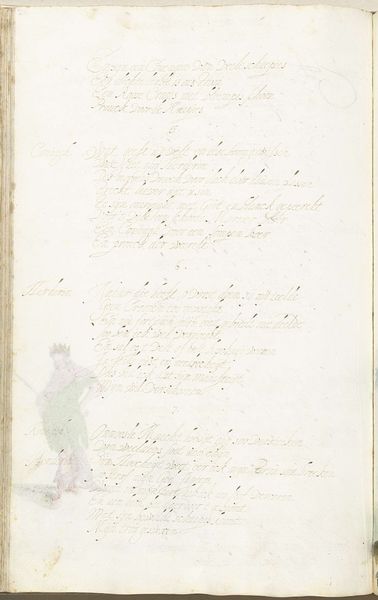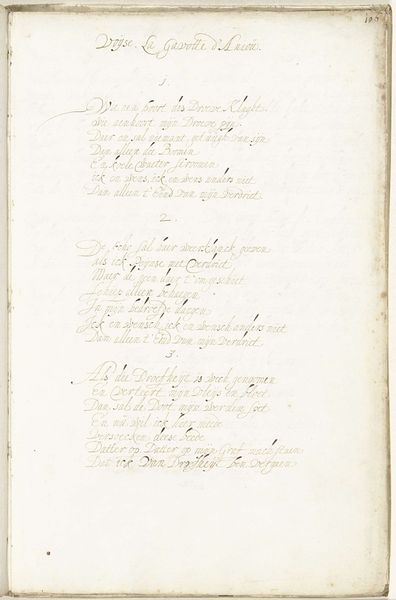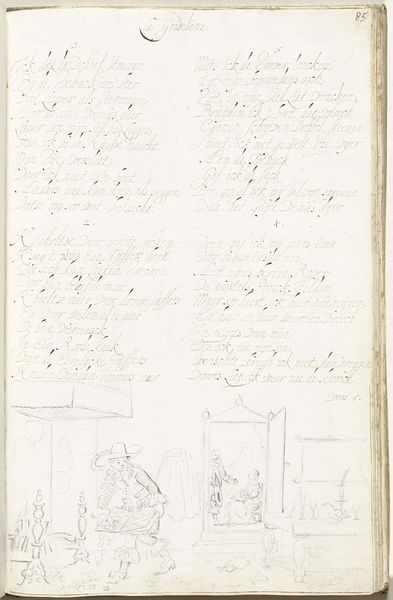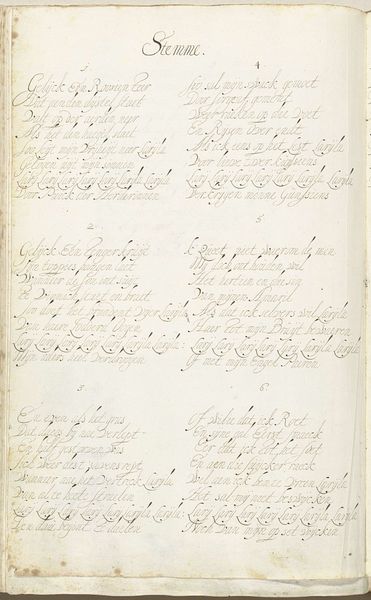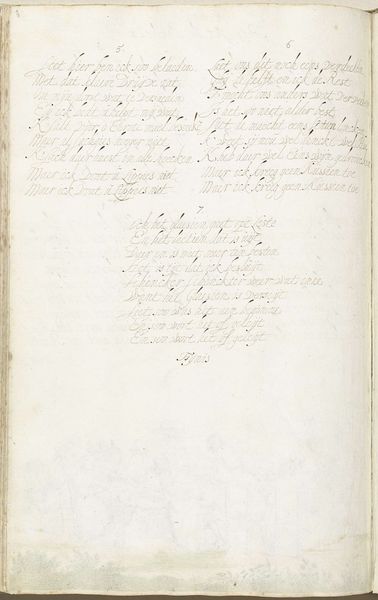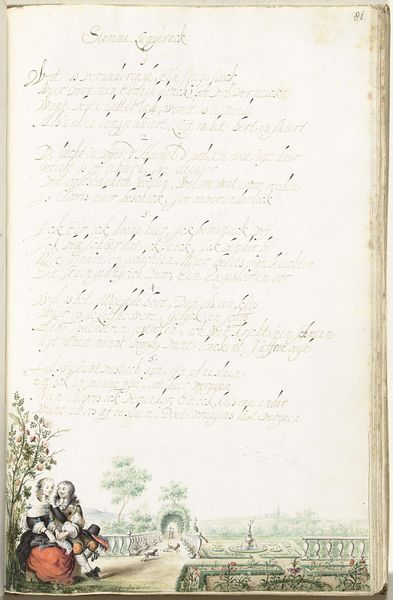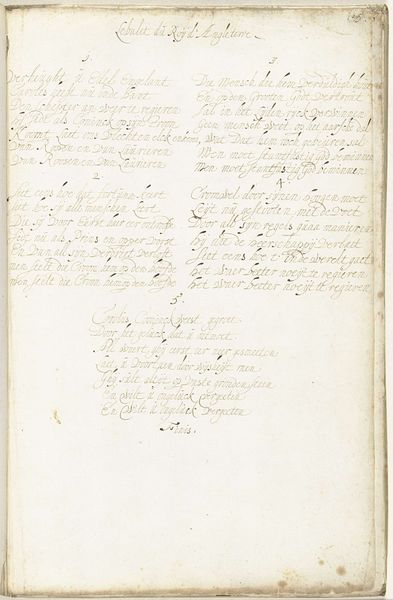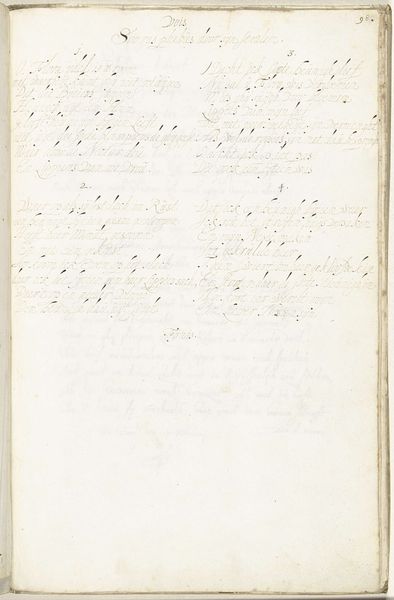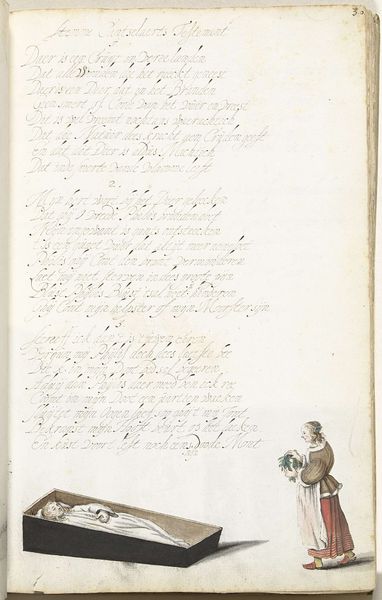
drawing, paper, ink
#
portrait
#
drawing
#
dutch-golden-age
#
paper
#
ink
#
genre-painting
#
miniature
#
watercolor
Dimensions: height 313 mm, width 204 mm
Copyright: Rijks Museum: Open Domain
This page from Gesina ter Borch’s poem depicts figures from her poem on handmade paper, likely dating to the mid-17th century. Note the presence of three female figures, Cecilya, Floriaen, and Clorinde. While unique to Ter Borch, such groupings of three female figures draw on a long history of representing women in art, evoking, for instance, the classical Three Graces. The motif of the Three Graces, often associated with beauty and charm, has roots stretching back to ancient Greece. As this symbol migrated through time, it appeared in countless guises, each era imbuing it with new significance. The persistence of this motif reveals a deep-seated, perhaps subconscious, fascination with idealized femininity and harmony. This fascination, rooted in cultural memory, highlights how images resonate across centuries, tapping into collective desires and anxieties. Ter Borch's depiction revives and subtly reshapes this ancient symbol. This visual echo across time engages us on an emotional level, reminding us that art is a conversation between past and present.
Comments
No comments
Be the first to comment and join the conversation on the ultimate creative platform.


